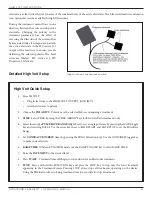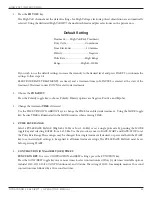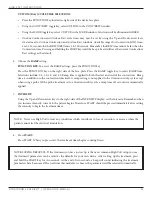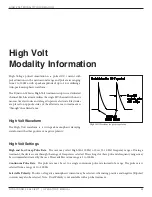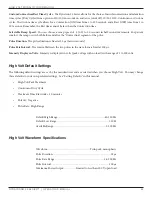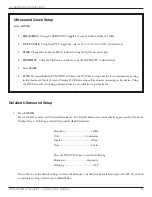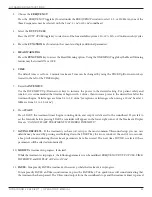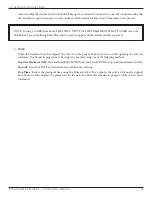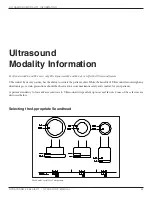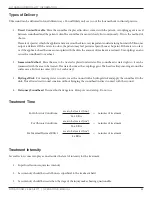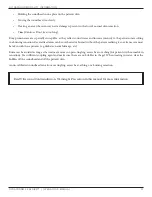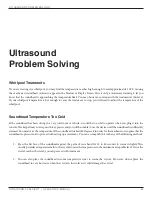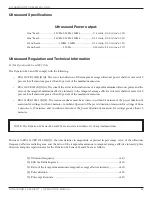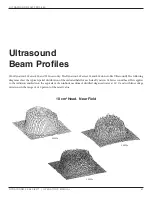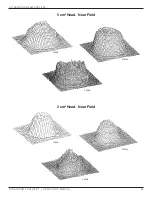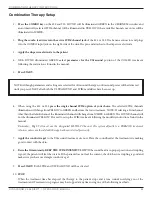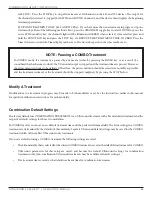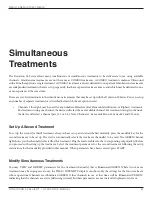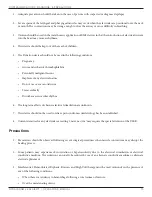
ulTrasound modalITy InformaTIon
DYNATRON® 25 SERIES™ | OPERATOR’S MANUAL
55
Types of Delivery
Ultrasound can be delivered in four different ways. You will likely only see two of the four methods in clinical practice.
1. Direct Contact Movable. Here the soundhead is placed in direct contact with the patient. A coupling agent is used
between soundhead and the patient’s skin. The soundhead is moved slowly, but continuously. This is the method of
choice.
The rate of speed at which the applicator moves across the skin is very important in determining how much Ultrasonic
output is delivered. If the rate is too slow, the patient may feel periosteal pain (bone ache/pain). If the rate is too fast,
or if the applicator head becomes uncoupled with the skin, the amount of treatment is reduced. Uncoupling can also
cause the soundhead to overheat.
2. Immersion Method. Here the area to be treated is placed underwater. The soundhead is water tight so it can be
immersed with the area to be treated. The water becomes the coupling agent. The head is always moving around the
surface area, but not in contact (1/2 to 1 inch away).
3. Hydrogel Disk. For treating crater wounds, cover the wound with a hydrogel disk and apply the soundhead to the
disk. This allows direct wound sonation without bringing the soundhead in direct contact with the wound.
4. Stationary Soundhead. This method is dangerous. Hot spots can develop. Do not use.
Treatment Time
For Sub-Acute Conditions:
area to be treated (cm
2
)
= minutes of treatment
1.5 x ERA
For Chronic Conditions:
area to be treated (cm
2
)
= minutes of treatment
1.0 x ERA
For Maximal Thermal Effect:
area to be treated (cm
2
)
= minutes of treatment
.8 x ERA
Treatment Intensity
Several factors come into play as one decides the level of intensity for the treatment.
1. Superficial lesions require less intensity.
2. Less intensity should be used if bone is superficial to the treatment field.
3. Less intensity should be used when the stage of the injury makes heating questionable.

